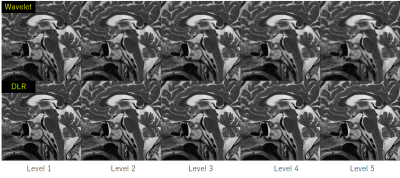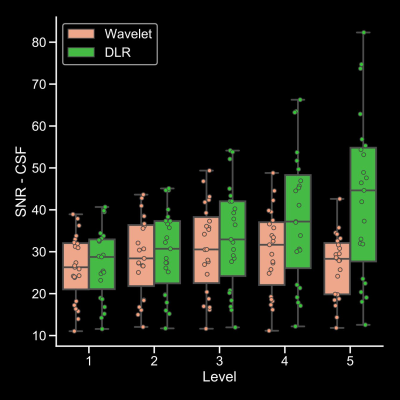Takeshi Nakaura1, Hiroyuki Uetani1, Kousuke Morita1, Kentaro Haraoka2, Akira Sasao1, Masahiro Hatemura1, and Toshinori Hirai1
1Diagnostic Radiology, Kumamoto University, Kumamoto, Japan, 2Cannon Medical Systems Japan, Tochigi, Japan
1Diagnostic Radiology, Kumamoto University, Kumamoto, Japan, 2Cannon Medical Systems Japan, Tochigi, Japan
The
DLR based denoising method can improve the image quality of T2WI of pituitary
with CS as compared with the
conventional wavelet based denoising method, and
the difference became more noticeable at higher denoising levels.

Representative case. (upper row) Conventional wavelet based denoising
method, (lower row) DLR based denoising
method. The DLR based denoising method offered decrease in image noise,
artifact, and clear depiction of pituitary grand and small objects as compared
with the conventional wavelet based denoising method.
